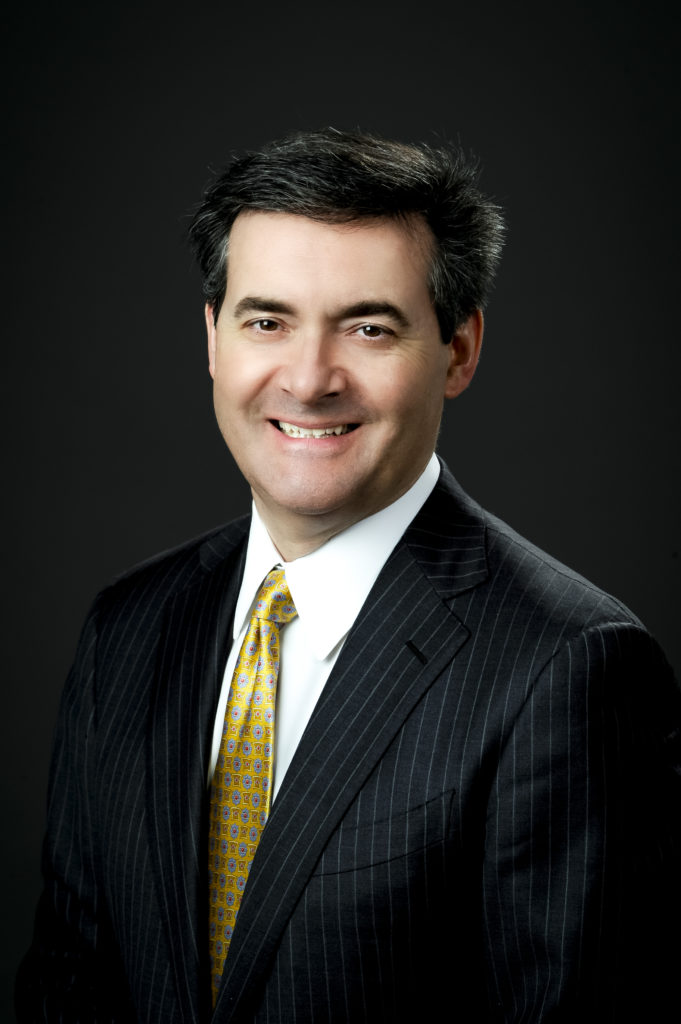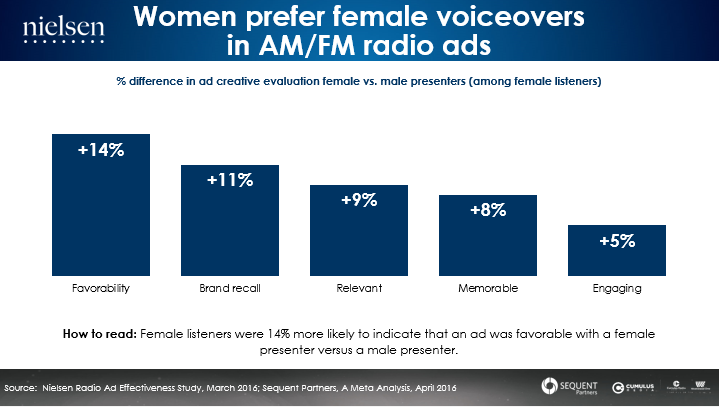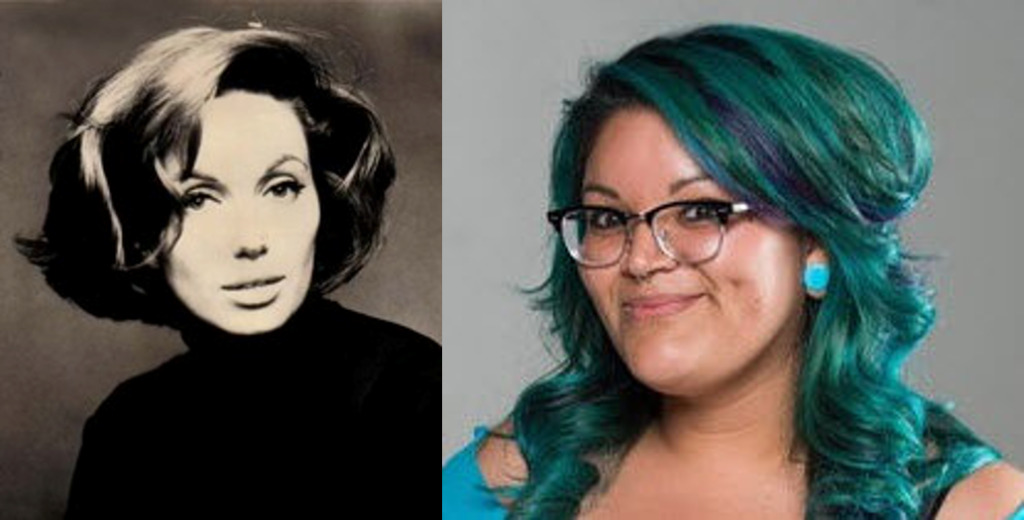
This past October, a blog post we wrote about women in radio made a lot of noise. “Closing Radio’s Gender Gap” cited a research study from McKinsey & Company about women’s roles in the modern workplace. Not surprisingly, conditions for women in most industries continue to lag their male counterparts, including management representation. And the study also shows women are more likely to endure what McKinsey referred to as “microaggressions” (being addressed in less than a professional way, being mistaken for someone at a much lower level, etc.).
We piggybacked our AQ study from last spring, comprised of more than 1,100 radio air personalities from all over the U.S. And one of the most salient findings is that the ratio of men to women on the air is 75:25 – not anywhere near how the actual listening audience breaks down.
But that’s where the “isms” about radio and listeners come into play – the tenets that many of us learned during our first years in the business:
- There should only be one “female daypart” on most music stations
- Morning shows work better with a male lead and a female sidekick
- Women actually prefer male voices
I’m sure there are other radio institutional “truths” about gender, station roles, and what works for listeners. And they are probably just as outmoded or out-and-out wrong.
Slowly and surely, more women are making their way onto the airwaves, including in “top dog” positions. The graphic at the top of this post for the “Bob & Sheri” show is indicative of the changes underfoot. Note the positioning statement in an ad designed to attract new affiliates. And Sheri Lynch is now alone as more and more women are working their way into prominent positions on the radio.

Nonetheless, the “gender gap” in radio is still an issue. And that’s why recent research commissioned by Westwood One caught my attention. In an article in MediaVillage by Pierre Bouvard – “Why Doesn’t Your Ad Have A Female Voiceover. It Should” – several research studies point to findings that suggest women should have a more prominent role in voice ads. And by extension, women like to hear women on the air.
And that should give broadcasters – and advertisers – good reasons to consider the inclusion of more female voices on the air and in creative marketing efforts.
Here are a few highlights….
A study by Sequent Partners tested 100 broadcast radio ads tested by Nielsen. The conclusion? “Women preferred hearing voices like their own on the radio.”

An Advertising Benchmarks Index study delivered the same takeaway. Women – and by a smaller margin, men – respond better to female voices.
In the all-important auto-intender category, a Veritronic study confirms some of the best-performing creative ads feature female voices. Two of the top ten best testers showcased a woman in a lead role.
And in the more subjective, but prestigious Radio Mercury Awards, (as well as the Cannes Lions and Clios), ads voiced by women stood out for “authenticity, trust, and uniqueness.”
There’s considerably less research available about women on the air – hosting talk and music shows – but logic suggests that if female voices are appealing to car buyers and other consumers, their presence on the air would enhance their radio stations.
And while male personalities were in the majority at last month’s National Radio Hall of Fame induction ceremony, honorees also included Joan Hamburg, Dr. Laura Schlessinger, and the Fabulous Sports Babe, Nancy Donnellan. And WAXQ’s Jim Kerr made it a point to include his long-time partner, Shelli Sonstein, in his acceptance speech.

While women have lagged behind men in their numbers on the air, their impact on the industry has been seismic. Allison Steele (“The Nightbird”), Robin Quivers, Terry Gross, Delilah, Ellen K., Diane Rehm, Yvonne Daniels, and the aforementioned Ms. Lynch are just a handful of women who have crackled the airwaves, shaping the way Americans have been entertained and informed.
And the up and comers – perhaps the Hall of Famers of tomorrow – are making their marks in a radio industry that’s even more challenged to capture the consumer’s attention in an overcrowded media environment.
You can increasingly see and hear from them at radio conferences, including Morning Show Boot Camp (of course), as well as the Worldwide Radio Summit, Conclave, and other industry gatherings.
Our sensibilities – as well as our ears – should tell us the media and entertainment environment is changing, the old ways and mores are coming down, and new listeners are looking for something different on the airwaves. Everyone’s research shows the gender and ethnicity lines are blurred (or non-existent) among Millennials and Gen Z consumers looking for compelling content – period – and personalities that matter and who move them.
It shouldn’t be surprising to us that in the next few weeks, year-end wrap-ups will conclude that 2018 was the Year of the Woman.
In the coming year, it could be the Year of the Woman….In Radio.”
- What To Do If Your Radio Station Goes Through A Midlife Crisis - April 25, 2025
- A 2020 Lesson?It Could All Be Gone In A Flash - April 24, 2025
- How AI Can Give Radio Personalities More…PERSONALITY - April 23, 2025




There was a day during our record ratings run at WFBQ that I looked around the table during a department head meeting.
I realized that the room was made up of mostly female and minority staff.
I doubt that I will ever have a more proud moment in this business.
I love this story. Thanks, Marty.
Thanks for addressing this topic, Fred! Gene and I worked hard our entire career to create gender equality on our morning show. Penny-for-penny we always negotiated an equal salary in our employment contracts. And we had to “trick” some programmers into letting us be equal (versus them putting me in the role of “sidekick” or “laugher”). We were told that the person in charge of the show was the one who ran the board, so our entire career we BOTH sat behind the board and shared the responsibilities. That REALLY messed with some heads! We also ensured I had 70% of the mic time so it sounded like we were equals through the speakers. Gender equality was the cornerstone of our show. We also had the great fortune to work for some of the best broadcasters in the business including Brenda Adriance, Val Maki, Nikki Nite and Ardie Gregory. Oh, did we need to mention they were women? 😉 Thanks, Fred!
Julie, you and Gene had a plan and a goal – and you found a way to make it work. I also contend that a major variable in determining career outcomes is who you worked for. Some very talented and dedicated people have either been very unlucky and/or made some questionable job choice decisions. In your case, you worked for some strong, dedicated and passioate managers. And not surprisingly, some of the best were women. Thanks for the comment.
Another great post, Fred! Thank you for reminding us of the important matters. And for music stations, more female artists on your playlists, please.
Thank you, Chris.